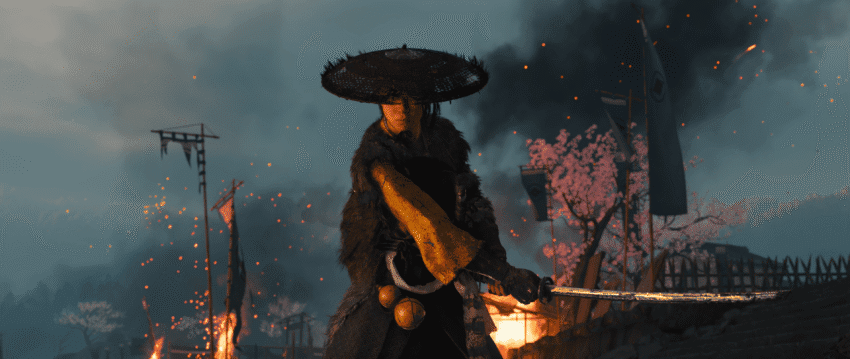
ghost of y tei can be chill Ghost of Yōtei introduces new cinematic modes that enhance the gaming experience by drawing inspiration from renowned filmmakers, allowing players to engage with the game in unique ways.
ghost of y tei can be chill
Introduction to Ghost of Yōtei
Ghost of Yōtei, the highly anticipated sequel to the acclaimed Ghost of Tsushima, continues to immerse players in the rich tapestry of samurai culture and aesthetics. Developed by Sucker Punch Productions, this game not only builds on the foundation laid by its predecessor but also introduces innovative features that deepen the connection between gameplay and cinematic storytelling. One of the standout features of Ghost of Yōtei is its new cinematic modes, which pay homage to legendary filmmakers and their unique styles.
The Legacy of Ghost of Tsushima
Ghost of Tsushima was celebrated for its breathtaking visuals and engaging narrative, allowing players to step into the shoes of Jin Sakai, a samurai warrior fighting against the Mongol invasion of Japan. The game’s success was partly attributed to its ability to evoke the feeling of participating in a classic samurai film. To enhance this experience, the developers introduced a black-and-white mode inspired by Akira Kurosawa, the iconic director known for masterpieces such as Seven Samurai. This mode not only transformed the visual presentation but also added a layer of authenticity, allowing players to feel as though they were part of a cinematic experience.
Cinematic Modes in Ghost of Yōtei
Building on the success of the Kurosawa mode, Ghost of Yōtei expands the cinematic experience with two additional modes inspired by contemporary filmmakers. These new modes aim to provide players with varied gameplay experiences while maintaining the game’s core themes of honor, sacrifice, and the samurai spirit.
Kurosawa Mode Returns
The return of the Kurosawa mode in Ghost of Yōtei is a testament to the impact that the original mode had on players. This mode allows gamers to experience the world of Yōtei in a striking black-and-white aesthetic, reminiscent of classic samurai films. The choice to include this mode again reflects the developers’ understanding of the importance of visual storytelling in gaming. By utilizing high-contrast visuals, players can immerse themselves in the game’s narrative while appreciating the artistry of the samurai genre.
Takashi Miike’s Influence
In addition to the Kurosawa mode, Ghost of Yōtei introduces a cinematic mode inspired by Takashi Miike, the acclaimed director known for his work on films such as 13 Assassins. This mode features a tighter camera during combat sequences, heightening the intensity of battles and allowing players to feel the adrenaline rush of each encounter. The decision to collaborate with Miike reflects a desire to blend traditional samurai storytelling with modern filmmaking techniques, creating a dynamic and engaging gameplay experience.
Shinichirō Watanabe’s Lo-Fi Beats
The third cinematic mode in Ghost of Yōtei draws inspiration from Shinichirō Watanabe, the director of the beloved anime series Samurai Champloo. This mode incorporates lo-fi beats into the game’s soundtrack, providing a unique auditory experience that complements the visual elements. The fusion of samurai culture with contemporary music styles creates an atmosphere that resonates with both traditional and modern audiences. Players can engage with the game on a deeper level, as the music enhances the emotional weight of their journey through the world of Yōtei.
Gameplay Implications
The introduction of these cinematic modes not only enriches the aesthetic experience but also has significant implications for gameplay. Each mode offers a distinct approach to combat and exploration, encouraging players to experiment with different styles and strategies.
Enhanced Combat Experience
The tighter camera in the Miike-inspired mode allows players to engage more intimately with the action. This design choice emphasizes the skill and precision required in combat, making each encounter feel more personal and impactful. Players may find themselves more invested in the outcomes of battles, as the close-up perspective heightens the stakes and immerses them in the chaos of the fight.
Exploration and Atmosphere
In contrast, the Kurosawa mode invites players to explore the vast landscapes of Yōtei in a more contemplative manner. The black-and-white visuals encourage a slower pace, allowing players to appreciate the beauty of the environment and the intricacies of the game’s design. This mode may appeal to those who wish to experience the narrative in a more reflective way, emphasizing the themes of honor and sacrifice that are central to the samurai ethos.
Soundtrack and Emotional Engagement
The incorporation of lo-fi beats in the Watanabe mode adds another layer of emotional engagement. Music has a profound impact on the gaming experience, and the unique soundtrack can influence players’ feelings as they navigate the challenges of the game. The blend of traditional samurai elements with modern musical styles creates a juxtaposition that resonates with a diverse audience, appealing to both fans of classic cinema and contemporary culture.
Community and Stakeholder Reactions
The announcement of these cinematic modes has generated excitement within the gaming community. Fans of the original Ghost of Tsushima have expressed their enthusiasm for the return of the Kurosawa mode, while also eagerly anticipating the new experiences offered by the Miike and Watanabe modes. Social media platforms have been abuzz with discussions about the potential impact of these modes on gameplay and storytelling.
Filmmaker Collaborations
The collaboration with renowned filmmakers has also drawn attention from industry stakeholders. Many see this as a positive trend in gaming, where the boundaries between film and interactive entertainment continue to blur. By involving filmmakers in the development process, game developers can create richer narratives and more immersive experiences that resonate with players on multiple levels.
Conclusion
Ghost of Yōtei represents a significant evolution in the Ghost franchise, building on the strengths of its predecessor while introducing innovative features that enhance the gaming experience. The new cinematic modes, inspired by iconic filmmakers, provide players with diverse ways to engage with the game’s narrative and gameplay. As players navigate the world of Yōtei, they can choose to immerse themselves in the classic samurai aesthetic, experience intense combat, or enjoy a modern soundtrack that complements their journey. The thoughtful integration of these cinematic elements reflects a deep understanding of storytelling in gaming and sets a new standard for future titles.
Source: Original report
Was this helpful?
Last Modified: October 2, 2025 at 7:44 pm
0 views















